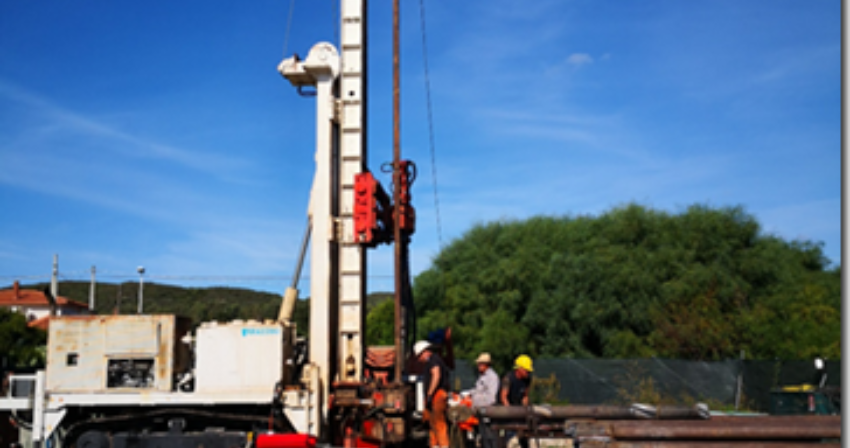Creation of the Sotacarbo Fault Lab
CEEP (Centro Eccellenza sull’Energia Pulita - Clean Energy Centre of Excellence) research activities as part of the studies on monitoring geological confinement systems.
Date:
24 September 2021
One of the main problems limiting the commercial development of geological CO2 confinement techniques is the risk of upwelling of part of the injected CO2. This risk isn’t so much related to the safety of the environment and the population (there are many locations in the world where CO2, generally deriving from volcanic phenomena, naturally rises from the subsoil), but rather to the nullifying of the advantages of the confinement itself (with huge investments to geologically store the carbon dioxide rendered futile by its rising to the surface). In this sense, faults and rock fracturing represent potential preferential pathways and require special attention in the preventive and monitoring phases.
Sotacarbo has therefore planned to set up a field laboratory (Sotacarbo Fault Lab) of international relevance to study possible leaks of CO2 through a fault, in order to better understand the behavior by developing advanced monitoring instrumentation, just as it’s done in confinement. As there are few infrastructures of this kind in the world, the Sotacarbo Fault Lab is an object of great interest for the scientific community. The development of this laboratory should be considered of strategic importance to Sotacarbo and the international community.
The infrastructure consists of two main wells, one for monitoring and one for controlled microinjections of CO2 from cylinders, as well as a series of piezometers for monitoring the aquifer.
The goal of the experimental activity is to assess how carbon dioxide injected in small quantities spreads into the subsoil and eventually rises through the fault system. At the same time, the infrastructure will allow the development of advanced tools and protocols for continuous monitoring of CO2 in geological containment sites.
The experiments, as mentioned above, will mainly consists of the direct injection of small quantities of CO2 into a fault at a depth of 200 m, using both permanent and mobile geochemical and geophysical instruments (electrodes, geochemical probes, optical fibers) to evaluate the diffusion of CO2 underground.
The activity involves a broad international partnership for geological simulation and equipment development. The partnership includes The University of Rome La Sapienza, the National Institute of Oceanography and Experimental Geophysics (OGS) and the National Institute of Geophysics and Volcanology (INGV), together with several European partners, with particular reference to Silixa (UK). In addition, numerous international partners are participating in the activity, including the National Energy Technology Laboratory of the US Department of Energy (NETL, USA), the Peter Cook Center on Carbon Capture and Storage at the University of Melbourne (Australia), the K-COSEM consortium (South Korea) and the CO2CRC consortium (Australia).
Top priority will be given to completing the infrastructure and defining the operational procedures in order to optimize the experimental campaigns.
Last update
06/11/2024, 12:03

